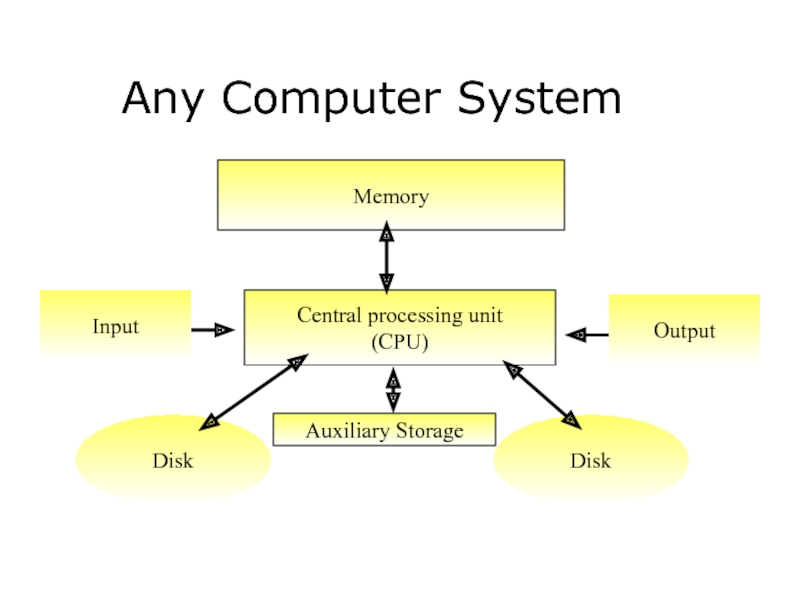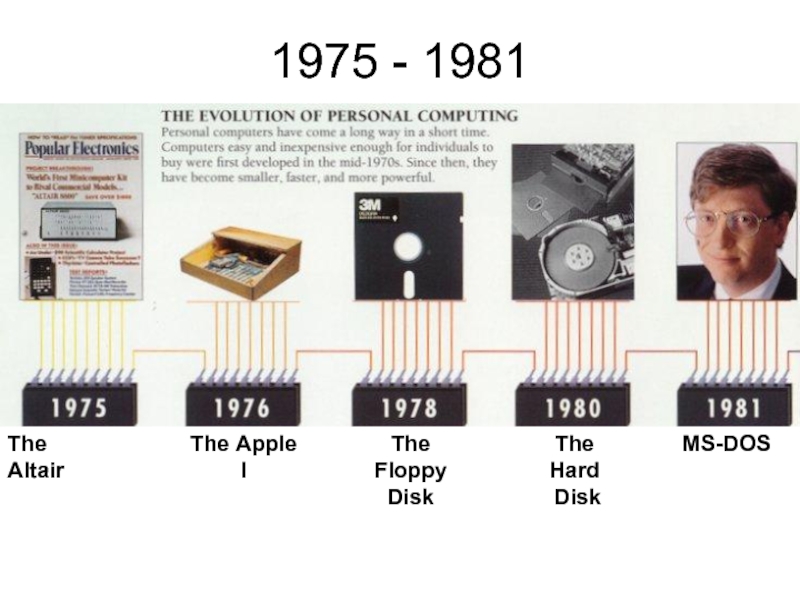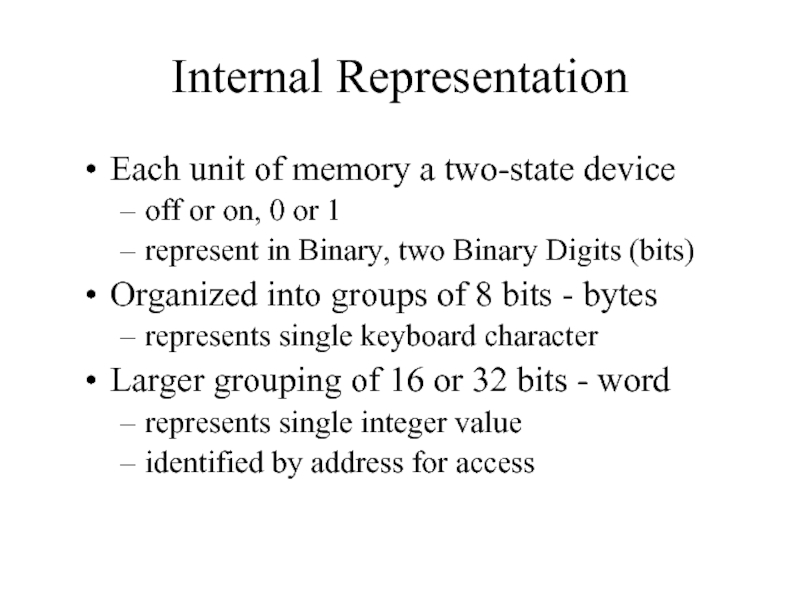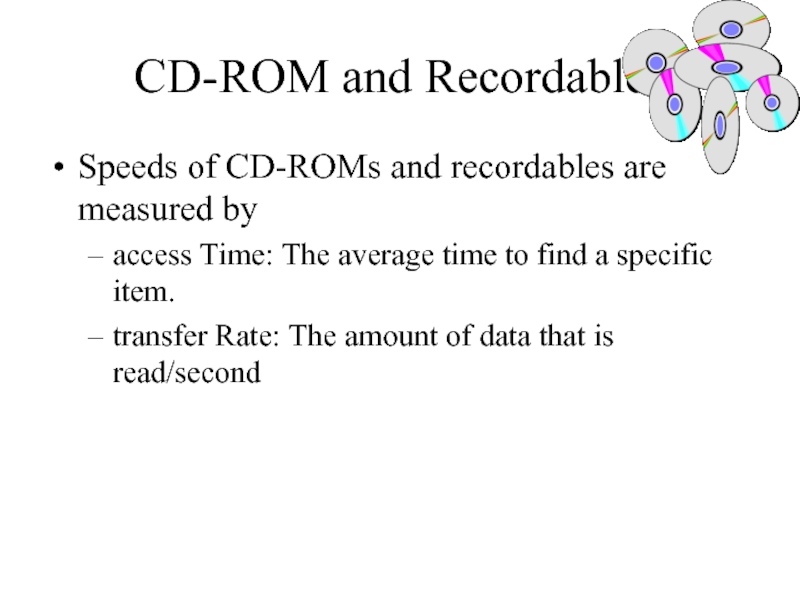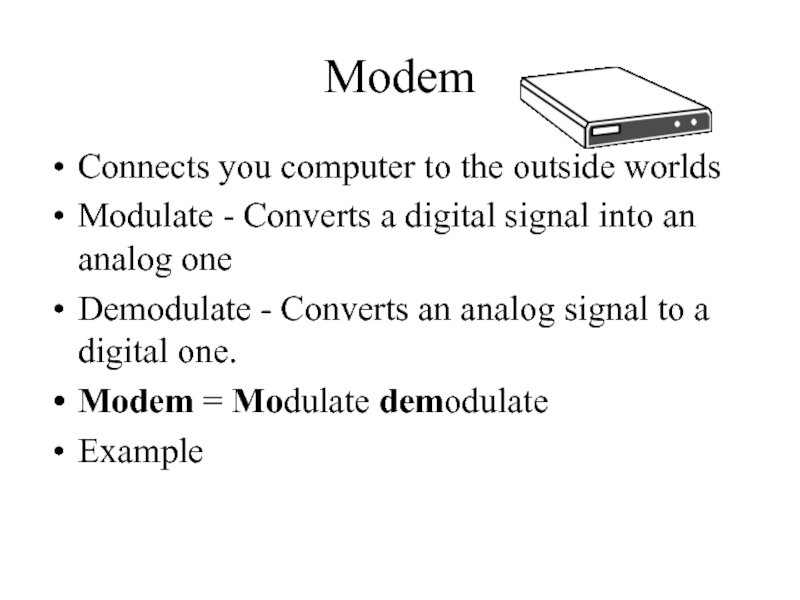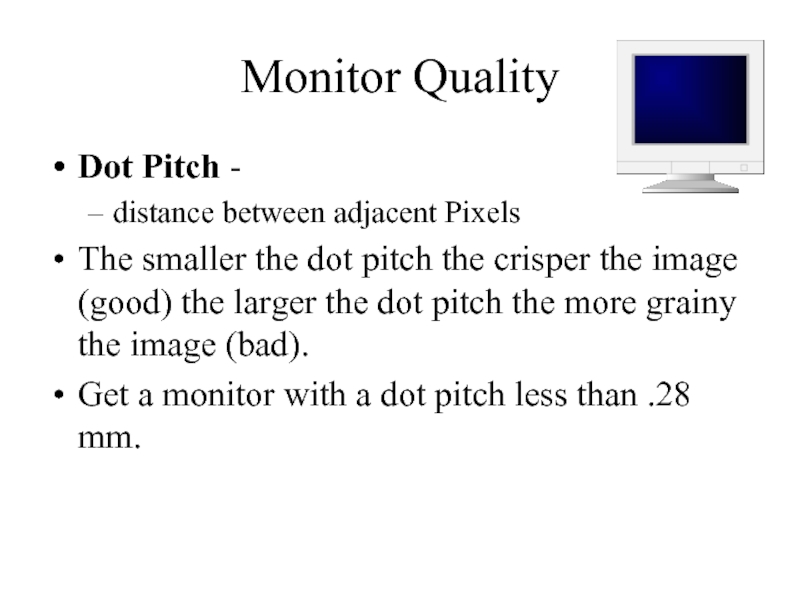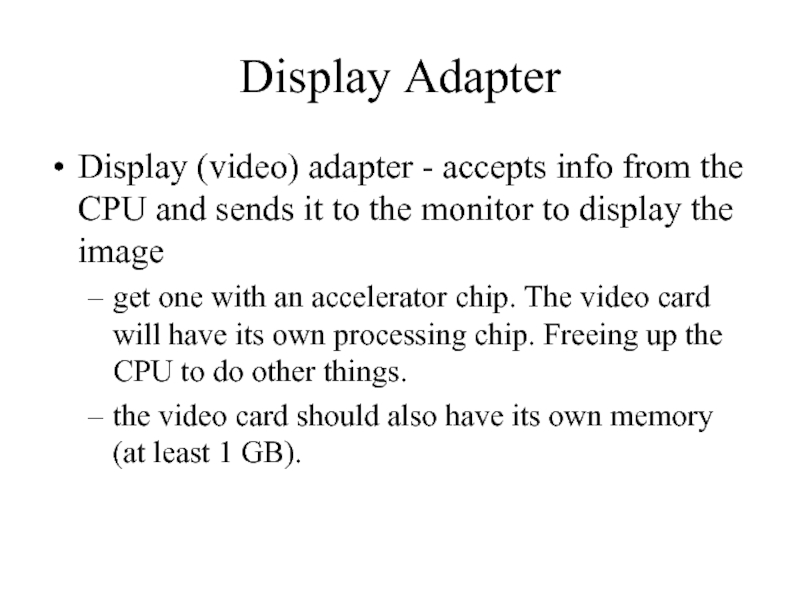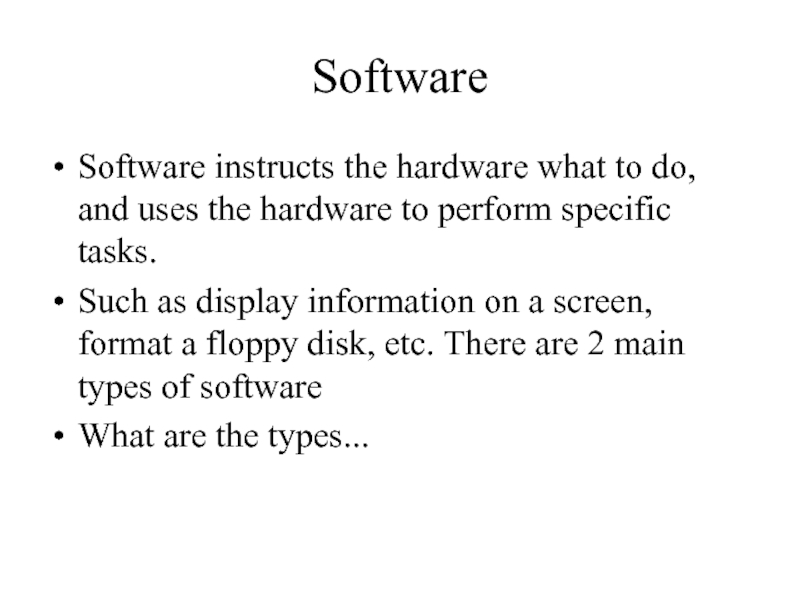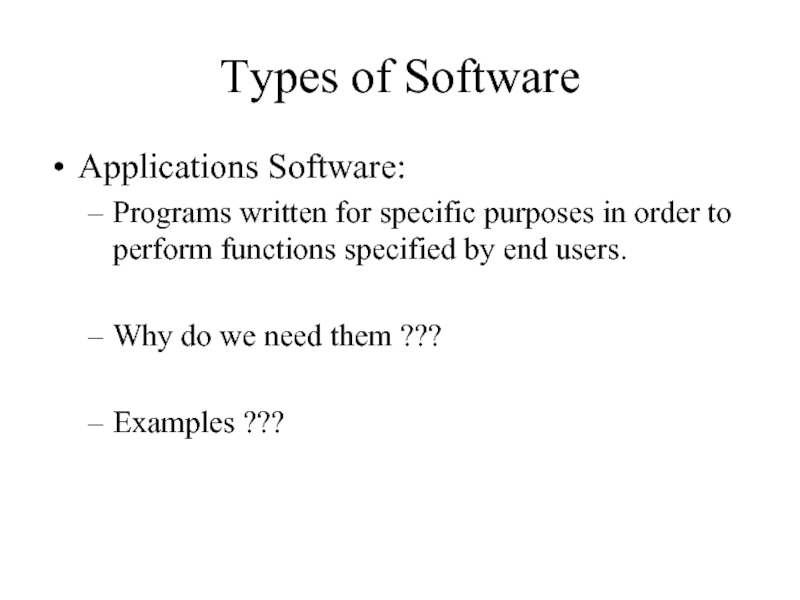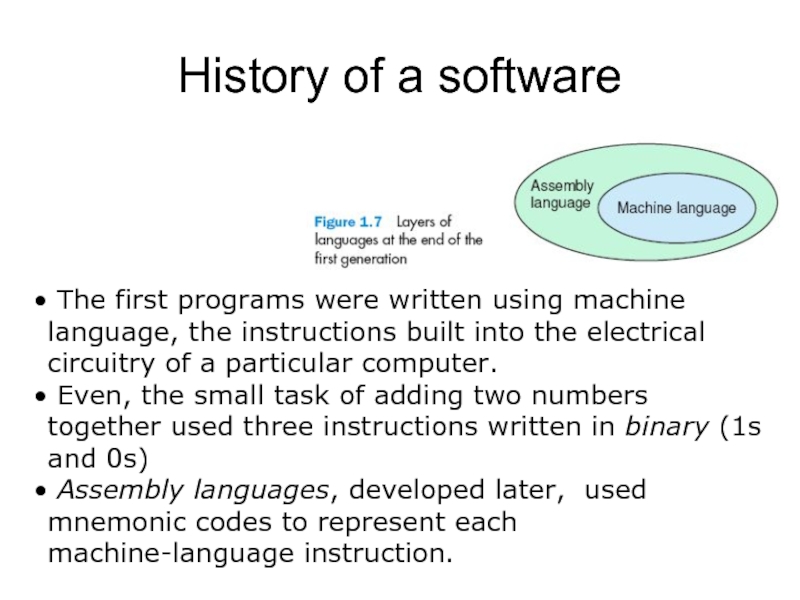Practice,
the Less You Bleed in Battle.”
- Главная
- Разное
- Дизайн
- Бизнес и предпринимательство
- Аналитика
- Образование
- Развлечения
- Красота и здоровье
- Финансы
- Государство
- Путешествия
- Спорт
- Недвижимость
- Армия
- Графика
- Культурология
- Еда и кулинария
- Лингвистика
- Английский язык
- Астрономия
- Алгебра
- Биология
- География
- Детские презентации
- Информатика
- История
- Литература
- Маркетинг
- Математика
- Медицина
- Менеджмент
- Музыка
- МХК
- Немецкий язык
- ОБЖ
- Обществознание
- Окружающий мир
- Педагогика
- Русский язык
- Технология
- Физика
- Философия
- Химия
- Шаблоны, картинки для презентаций
- Экология
- Экономика
- Юриспруденция
Informatics. Von Neumann architecture and PC Hardware презентация
Содержание
- 1. Informatics. Von Neumann architecture and PC Hardware
- 2. 2.Von Neumann architecture and PC Hardware
- 3. von Neumann Architecture 1946 - John von
- 4. Any Computer System
- 5. Back of the Computer Cooling Fan Power
- 6. Inside the Computer CD-ROM CPU Expansion slots
- 7. How the processor (CPU) is placed on the Motherboard Intel 486 CPU RAM
- 8. 1975 - 1981 The Altair The
- 9. 1981 - 1993
- 10. Intel Pentium Processors PENTIUM PENTIUM II PENTIUM Pro
- 11. Computer Components CPU - Central Processing Unit
- 12. Computer System Architecture
- 13. Components (con’t) Main memory (internal or primary
- 14. Internal Representation Each unit of memory a
- 15. The Microprocessor - Microprocessor (CPU - Central
- 16. The Microprocessor The speed of a microprocessor
- 17. The Microprocessor Example: A 200 MHz Pentium
- 18. Primary Memory Primary Memory (RAM)- A temporary
- 19. Primary Memory We need an permanent storage
- 20. Auxiliary Storage A permanent storage device that
- 21. Auxiliary Storage CD-ROM - compact disk
- 22. CD-ROM and Recordables Speeds of CD-ROMs and
- 23. CD-ROMs and Recordables 1st CD-ROMs had speeds
- 24. The Local Bus The Bus is
- 25. The Local Bus Today’s PCs have multiple
- 26. Printer Printers Dot Matrix lots of noise
- 27. Modem Connects you computer to the outside
- 28. Modem Speed is measured in BPS (Bits
- 29. Sound Card 2 Functions play previous recorded
- 30. Video 2 major components monitor display Adapter
- 31. Monitor Quality Pixels - (PICture ELementS) the
- 32. Monitor Quality This formula (Pixels across X
- 33. Monitor Quality What happens when... small
- 34. Resolution and Monitor Size
- 35. Monitor Quality Dot Pitch - distance
- 36. Monitor Quality Vertical refresh rate how
- 37. Display Adapter Display (video) adapter - accepts
- 38. Computer Software
- 39. Software Software instructs the hardware what to
- 40. Types of Software Operating systems a set
- 41. Types of Software Applications Software: Programs written
- 42. History of a software The first
- 43. The 2nd generation of sw Two of
- 44. The 2nd generation of sw The introduction
- 45. The 3rd generation of sw
- 46. Subareas of Computer Science Algorithms and data
Слайд 1Kazakh British Technical University
Almaty 2016
Informatics
Made by:
V. PopoV
“The More You Sweat in
Слайд 3von Neumann Architecture
1946 - John von Neumann (Princeton)
Developed stored program concept
both
programs and data stored in same memory
Modern computers said to use von Neumann architecture
Modern computers said to use von Neumann architecture
Слайд 5Back of the Computer
Cooling Fan
Power Supply
Keyboard Connector
Mouse Connector
Parallel Printer Port
Video
Connector
Слайд 6Inside the Computer
CD-ROM
CPU
Expansion slots
Floppy drive
Hard disk
Memory chip
Motherboard
Power supply
Слайд 11Computer Components
CPU - Central Processing Unit
controls operation of entire systems
performs arithmetic
and logic operations
stores and retrieves instructions and data
contains
ALU - Arithmetic-Logic Unit
Control Unit
stores and retrieves instructions and data
contains
ALU - Arithmetic-Logic Unit
Control Unit
Слайд 13Components (con’t)
Main memory (internal or primary memory)
RAM - Random Access Memory
stores
instructions and data temporarily
Secondary memory (external or auxiliary)
magnetic disk (hard disk or floppy)
magnetic tape
Peripherals - used for Input/Output
keyboard, printer, monitor, etc.
Secondary memory (external or auxiliary)
magnetic disk (hard disk or floppy)
magnetic tape
Peripherals - used for Input/Output
keyboard, printer, monitor, etc.
Слайд 14Internal Representation
Each unit of memory a two-state device
off or on, 0
or 1
represent in Binary, two Binary Digits (bits)
Organized into groups of 8 bits - bytes
represents single keyboard character
Larger grouping of 16 or 32 bits - word
represents single integer value
identified by address for access
represent in Binary, two Binary Digits (bits)
Organized into groups of 8 bits - bytes
represents single keyboard character
Larger grouping of 16 or 32 bits - word
represents single integer value
identified by address for access
Слайд 15The Microprocessor
- Microprocessor (CPU - Central Processing Unit)- logic, and
control are on a single chip.
generations of Intel micro processors
8088 (XT), 80286 (AT), 80386, 80486, Pentium (+MMX), Pentium Pro.
all are obsolete with the exception of high end Pentiums and Pentium Pros.
generations of Intel micro processors
8088 (XT), 80286 (AT), 80386, 80486, Pentium (+MMX), Pentium Pro.
all are obsolete with the exception of high end Pentiums and Pentium Pros.
Слайд 16The Microprocessor
The speed of a microprocessor is dependent on 2 things…
the
generation of the microprocessor
the clock speed
indicates how fast instructions are processed.
measured in MHz (millions of cycles per second)
the clock speed
indicates how fast instructions are processed.
measured in MHz (millions of cycles per second)
Слайд 17The Microprocessor
Example:
A 200 MHz Pentium is faster than a 166 MHz
Pentium.
but how much faster.
how much faster is a Pentium Pro 200 MHz compared to a Pentium 133 MHz.
but how much faster.
how much faster is a Pentium Pro 200 MHz compared to a Pentium 133 MHz.
Слайд 18Primary Memory
Primary Memory (RAM)- A temporary storage area that holds data
instructions, results, and passes information back and forth to the CPU.
the larger the memory the more sophisticated programs can run.
more programs can remain in memory at the same time.
the faster the system.
the larger the memory the more sophisticated programs can run.
more programs can remain in memory at the same time.
the faster the system.
Слайд 19Primary Memory
We need an permanent storage area.
This permanent memory is called
secondary or auxiliary storage.
types ???
types ???
Слайд 20Auxiliary Storage
A permanent storage device that retains its contents when the
power is turned off.
hard (fixed) Disk - remains permanently inside the system unit. (uses metal platters)
floppy disk - is portable and is made up of a plastic disk, enclosed in a hard plastic case.
hard (fixed) Disk - remains permanently inside the system unit. (uses metal platters)
floppy disk - is portable and is made up of a plastic disk, enclosed in a hard plastic case.
Слайд 21Auxiliary Storage
CD-ROM - compact disk read only memory
you can read
from the CD but can not write to it.
CD hold approx.. 650MB of data.
CD-Recordable, DVD-Recordable
allows you to read and write to a CD, DVD.
CD hold approx.. 650MB of data.
CD-Recordable, DVD-Recordable
allows you to read and write to a CD, DVD.
Слайд 22CD-ROM and Recordables
Speeds of CD-ROMs and recordables are measured by
access Time:
The average time to find a specific item.
transfer Rate: The amount of data that is read/second
transfer Rate: The amount of data that is read/second
Слайд 23CD-ROMs and Recordables
1st CD-ROMs had speeds of 600 millisecond access time
and transfer rates of 150 KB.
32 times the original speed (32X).
32 times the original speed (32X).
Слайд 24The Local Bus
The Bus is
the circuitry on the motherboard (the
main board that holds the microprocessor, memory, and adapter cards) that
provides a path for which data travels from one component to another.
provides a path for which data travels from one component to another.
Слайд 25The Local Bus
Today’s PCs have multiple local buses
each Bus is 32bits
wide and travels as fast as the microprocessor.
each Bus is connected to a specific device and does not have to share it with other components.
PCI - A bus designed by Intel for the Pentium or Pentium Pro.
each Bus is connected to a specific device and does not have to share it with other components.
PCI - A bus designed by Intel for the Pentium or Pentium Pro.
Слайд 26Printer
Printers
Dot Matrix
lots of noise
bad Print Quality
Inkjet
today’s entry level printer
quite and
pretty good speed
Laser
top of the line
quality measured in PPM and DPI.
Laser
top of the line
quality measured in PPM and DPI.
Слайд 27Modem
Connects you computer to the outside worlds
Modulate - Converts a digital
signal into an analog one
Demodulate - Converts an analog signal to a digital one.
Modem = Modulate demodulate
Example
Demodulate - Converts an analog signal to a digital one.
Modem = Modulate demodulate
Example
Слайд 28Modem
Speed is measured in BPS (Bits per second)
Standard speed today is
56k BPS
Today the standard is a FAX/MODEM where you get the functions of a MODEM and a FAX machine on one card.
Today the standard is a FAX/MODEM where you get the functions of a MODEM and a FAX machine on one card.
Слайд 29Sound Card
2 Functions
play previous recorded sound (translates a digital file into
sound)
to record new sound (translate sound into a digital file)
Need good speakers
to record new sound (translate sound into a digital file)
Need good speakers
Слайд 30Video
2 major components
monitor
display Adapter (Video Card)
Monitor
pixels
dot pitch
vertical refresh rate
Слайд 31Monitor Quality
Pixels - (PICture ELementS)
the number of dots that make up
a picture
measured by
# of dots across X # of dots down
800 X 600
in this example the max number of pixels that can be displayed on any monitor is 800 X 600 = 480,000
measured by
# of dots across X # of dots down
800 X 600
in this example the max number of pixels that can be displayed on any monitor is 800 X 600 = 480,000
Слайд 32Monitor Quality
This formula (Pixels across X Pixels down) is called the
resolution.
The bigger the monitor the larger the dots and the easier it is to see the image
The higher the resolution the sharper the image.
But…
The bigger the monitor the larger the dots and the easier it is to see the image
The higher the resolution the sharper the image.
But…
Слайд 33Monitor Quality
What happens when...
small Monitor and High Resolution
14”
1280 X 1024 (1,310,720)
large Monitor and Low Resolution
20” 640 X 480 (307,200)
Need a balance between resolution and monitor size.
large Monitor and Low Resolution
20” 640 X 480 (307,200)
Need a balance between resolution and monitor size.
Слайд 34Resolution and Monitor Size
Min
Resolution Pixels
Screen Size
640 X 480 (VGA) 307,200 14”
800 X 600 (Super VGA) 480,000 15”
1024 X 768 (Extended VGA) 782,462 17”
1280 X 1024 1,310,720 20”
1280 X 720P (HD)
1920 X 1080p (Full HD)
640 X 480 (VGA) 307,200 14”
800 X 600 (Super VGA) 480,000 15”
1024 X 768 (Extended VGA) 782,462 17”
1280 X 1024 1,310,720 20”
1280 X 720P (HD)
1920 X 1080p (Full HD)
Слайд 35Monitor Quality
Dot Pitch -
distance between adjacent Pixels
The smaller the dot
pitch the crisper the image (good) the larger the dot pitch the more grainy the image (bad).
Get a monitor with a dot pitch less than .28 mm.
Get a monitor with a dot pitch less than .28 mm.
Слайд 36Monitor Quality
Vertical refresh rate
how fast the screen is repainted (refreshed)
from top to bottom
If it is too slow the screen will flicker.
Get 70MHz (70 cycles per second) or faster.
If it is too slow the screen will flicker.
Get 70MHz (70 cycles per second) or faster.
Слайд 37Display Adapter
Display (video) adapter - accepts info from the CPU and
sends it to the monitor to display the image
get one with an accelerator chip. The video card will have its own processing chip. Freeing up the CPU to do other things.
the video card should also have its own memory (at least 1 GB).
get one with an accelerator chip. The video card will have its own processing chip. Freeing up the CPU to do other things.
the video card should also have its own memory (at least 1 GB).
Слайд 39Software
Software instructs the hardware what to do, and uses the hardware
to perform specific tasks.
Such as display information on a screen, format a floppy disk, etc. There are 2 main types of software
What are the types...
Such as display information on a screen, format a floppy disk, etc. There are 2 main types of software
What are the types...
Слайд 40Types of Software
Operating systems
a set of programs that manage the computer
(e.g. loads & controls the execution of other programs, manages the storage of data on disks)
examples???
examples???
Слайд 41Types of Software
Applications Software:
Programs written for specific purposes in order to
perform functions specified by end users.
Why do we need them ???
Examples ???
Why do we need them ???
Examples ???
Слайд 42History of a software
The first programs were written using machine
language, the instructions built into the electrical circuitry of a particular computer.
Even, the small task of adding two numbers together used three instructions written in binary (1s and 0s)
Assembly languages, developed later, used mnemonic codes to represent each machine-language instruction.
Even, the small task of adding two numbers together used three instructions written in binary (1s and 0s)
Assembly languages, developed later, used mnemonic codes to represent each machine-language instruction.
Слайд 43The 2nd generation of sw
Two of the high-level languages languages developed
during the second generation are still used today.
They are FORTRAN (a language designed for numerical applications)
and COBOL (a language designed for business applications).
They are FORTRAN (a language designed for numerical applications)
and COBOL (a language designed for business applications).
Слайд 44The 2nd generation of sw
The introduction of high-level languages provided the
ability for running the same program on more than one computer.
Each high-level language has a translating program that goes with it.
A program translated and run on any machine that has a translating program called a compiler.
Each high-level language has a translating program that goes with it.
A program translated and run on any machine that has a translating program called a compiler.
Слайд 46Subareas of Computer Science
Algorithms and data structures
Programming languages
Architecture
Numerical and symbolic computation
Operating
systems
Software methodology and engineering
Databases and information retrieval
Artificial intelligence and robotics
Human–computer Interaction
Graphics
Organizational informatics
Bioinformatics
Software methodology and engineering
Databases and information retrieval
Artificial intelligence and robotics
Human–computer Interaction
Graphics
Organizational informatics
Bioinformatics



